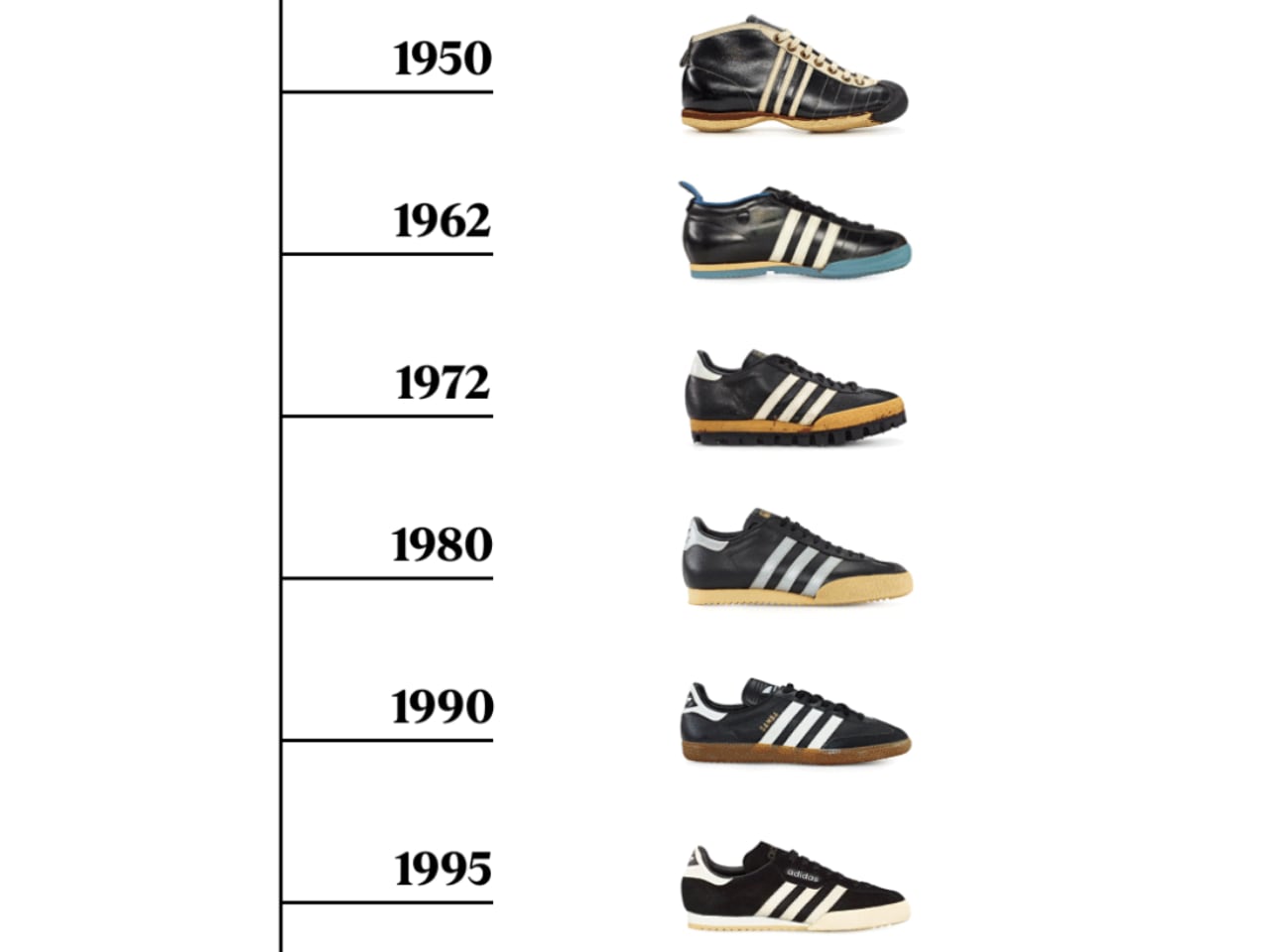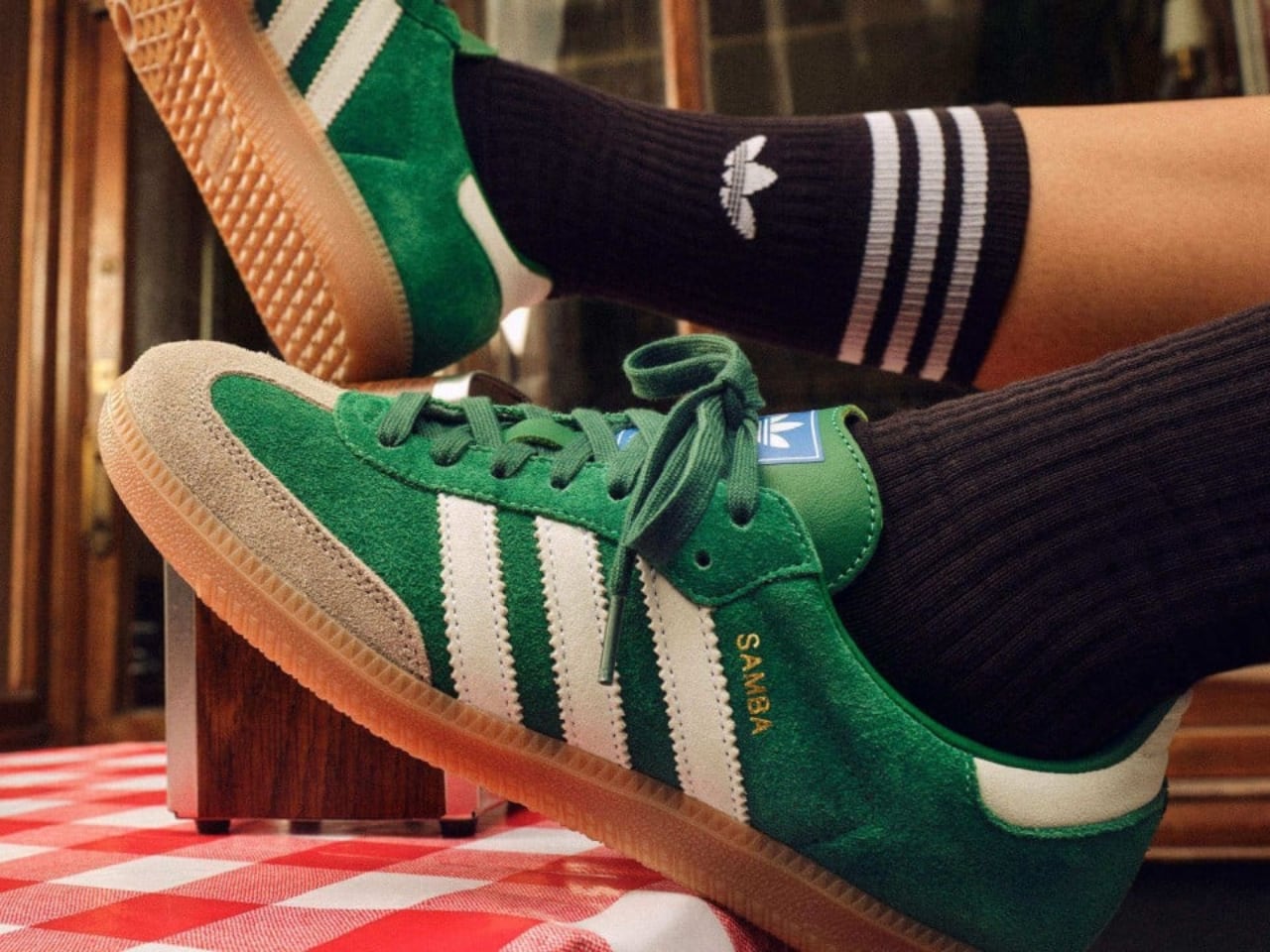
Welcome to Sneakers Sunday at Yanko Design. Today, we explore the storied evolution of the Adidas Samba. Originally designed in 1950, this iconic shoe has served athletes with its functional design while also becoming a staple in global fashion and culture. The Samba’s journey from a functional soccer shoe to a fashion icon offers a fascinating look at how design can adapt to changing times while retaining its core essence.
Designer: Adi Dassler + ADIDAS
Origins and Early Design
The Samba was born out of necessity in post-war Germany, where harsh winters created challenging conditions for soccer players. Adi Dassler, the founder of Adidas, recognized the need for a shoe that could offer traction on icy surfaces. His solution was the Samba, a shoe that featured a revolutionary gum rubber sole providing superior grip and traction. This innovation set Samba apart from other athletic footwear and marked the beginning of its iconic status.

Adi Dasslers with Adidas Samba in the 1950s
Alongside its functional sole, the Samba boasted a durable leather upper with Adidas’s signature three stripes, adding structural integrity and visual appeal. This combination of practicality and style made the Samba an instant hit on and off the field. The initial design laid the foundation for a versatile shoe that could transition seamlessly from sports to fashion.
The early Samba models also included a high-top variant, which offered additional ankle support and warmth, making it particularly popular in colder climates. This version retained the classic elements of the original while providing an added layer of functionality, broadening the shoe’s appeal beyond the athletic community. The high-top Samba was especially favored by soccer players who needed extra protection during harsh weather, demonstrating Adidas’s commitment to meeting the diverse needs of its customers.
Evolution Through the Decades
As the decades passed, the Samba underwent significant transformations to keep pace with changing trends and consumer preferences. In the 1960s and 1970s, Adidas began experimenting with new materials and colorways to expand the Samba’s appeal beyond its original sports market. The introduction of softer leathers and synthetic fabrics enhanced the shoe’s comfort and durability, making it more suitable for casual wear.

This period also saw the Samba embracing a broader color palette, moving beyond the traditional black and white to include a variety of vibrant hues and patterns. These changes reflected the growing influence of fashion on athletic footwear, as consumers increasingly sought shoes that combined performance with personal style. The Samba’s ability to adapt to these shifts while retaining its core design elements cemented its status as a timeless classic.
In addition to material innovations, the Samba’s design also evolved to reflect the changing needs of its audience. The high-top version, for instance, gained popularity in urban settings, where its stylish silhouette and practical features made it a favorite among fashion-forward individuals. This adaptability helped the Samba maintain its relevance in a rapidly changing market as it continued to capture the imagination of new generations.
Cultural Impact and Global Reach
The Samba’s appeal extended far beyond the soccer field, becoming a symbol of youth and rebellion across the globe. In the 1980s, the shoe was embraced by various subcultures, from hip-hop enthusiasts to skaters, each group adding its own chapter to the Samba’s rich history. Its simple yet striking design made it a popular choice for those looking to make a statement, whether on the dance floor or the streets.

This widespread adoption across diverse cultures and continents underscored the Samba’s universal appeal. Its ability to transcend boundaries and resonate with people from all walks of life highlighted its versatility and timeless charm. The Samba maintained its identity while adapting to myriad personal styles, whether paired with jeans and a T-shirt or more formal attire.

The Adidas Samba, designed in the 1950s, has evolved through numerous editions over the past 70 years. Photo: Adidas
The Samba’s influence also extended to the music and entertainment world, where it became a fixture in popular culture. Celebrities and musicians alike were drawn to the shoe’s unique blend of functionality and fashion, further solidifying its status as an icon. The Samba’s presence in films, music videos, and on the feet of influential figures helped cement its place in the cultural zeitgeist, ensuring its continued relevance in the ever-evolving fashion world.
Recent Collaborations and Innovations
In recent years, Adidas has leveraged collaborations to keep the Samba at the forefront of the fashion industry. Partnerships with designers and fashion houses have introduced new versions of the shoe that maintain its classic elements while incorporating modern design trends and materials. These collaborations have breathed new life into the Samba, attracting a new generation of fans and reinforcing its status as a fashion icon.

Naked x adidas Samba JI3993
One notable collaboration is with Copenhagen-based fashion brand Naked, which reimagined the Samba with intricate lace details and soft, pastel overlays. This partnership highlights the sneaker’s adaptability to current fashion trends and ability to blend traditional craftsmanship with contemporary design elements. These limited-edition models incorporate luxurious materials and subtle design tweaks, such as co-branded tongues and custom lace tags, making each release a collectible piece.

Naked x adidas Samba JI3993
Adidas has also focused on sustainability, integrating eco-friendly materials into the Samba’s design. This commitment ensures the shoe remains popular among environmentally conscious consumers without sacrificing style or quality. By embracing sustainable practices and innovative materials, Adidas is preserving the Samba’s legacy and paving the way for future generations of this iconic shoe.

The Adidas Samba’s journey from a functional sports shoe to a cultural icon is a testament to its timeless design and enduring appeal. Its continuous adaptation and relevance in the sneaker industry testify to its lasting legacy and broad appeal. As we look to the future, the Samba will continue to inspire and captivate audiences worldwide, cementing its place in the annals of sneaker history.






